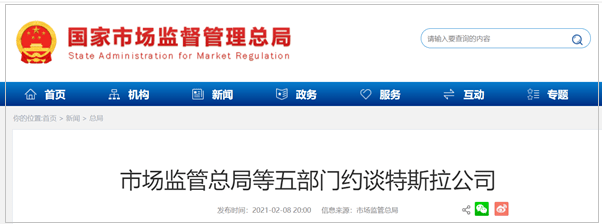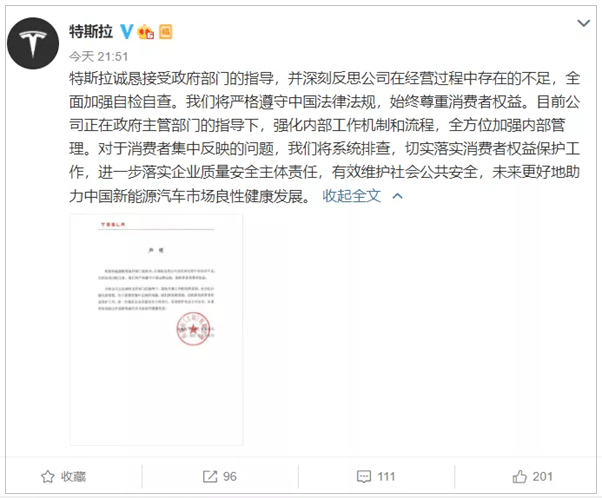Author: Wang Hui
Despite not being on this year’s “March 15”, Tesla’s reputation among some consumers, especially owners, has worsened.
The latest trigger was the “brake failure” accident in Haikou in March, in which a Tesla owner repeatedly stepped on the brake but could not stop the car, causing it to hit the guardrail, fortunately without serious injuries.
The follow-up to the incident was a mess: from conflicting claims by both parties, to the credibility of Tesla’s testing report, to the owner’s change of attitude and attempts at reconciliation. During this time, various rumors emerged, such as “Tesla buying off owners”.
This is not Tesla’s first time “failing to brake”.
Just two days before the incident in Hainan, a Tesla owner in Anyang, Henan Province, sat on the roof of the car to defend his rights, because the Tesla Model 3 brakes failed and the car rear-ended two cars before hitting the roadside guardrail, injuring his parents inside. Earlier in January, a Tesla owner in Beijing also questioned the “brake failure” and the two-car collision.
It is worth noting that in these similar cases, Tesla’s conclusion is that the brakes of the car itself are not the problem, but mainly external factors, as well as the driver’s braking force being too weak, resulting in insufficient braking distance and a comprehensive result.
Whether it is brake failure or the driver’s brake not “fully pressed down”? The reasons behind and the process seem confusing. However, ignoring whether Tesla should evaluate the rationality of the braking design, many Tesla owners who are criticizing Tesla believe that the most unacceptable thing, apart from the disputes over the accident’s cause and result, is Tesla’s “arrogant and shrugging off” attitude.
According to incomplete statistics, since last year, there have been more than 10 traffic accidents caused by Tesla’s out-of-control vehicles in China, and the four in January this year are the most typical. According to the owners’ claims, almost all of them are related to sudden acceleration, brake failure, or steering failure.
Similar situations also exist outside of China. In January of this year, the U.S. National Highway Traffic Safety Administration (NHTSA) received a petition, which included 127 reports of “unintended acceleration” accidents involving 123 Tesla vehicles, 110 traffic accidents, and 52 injuries.
On March 18th, local time in the United States, the NHTSA further revealed that it has launched investigations into 27 Tesla car crash accidents, at least three of which occurred in recent weeks.
Among all these events or accidents at home and abroad, many owners have a perception that Tesla’s attitude is particularly mechanical and passive.
For example, Han Chao, a Tesla owner in Tianjin, sued Tesla in court in 2019 for vehicle quality issues. In the first trial, Tesla was ordered to “refund three times the purchase price”, but Tesla is still seeking to appeal.Han Chao said that he was originally a staunch Tesla fan, but he became determined to sue Tesla because during the previous rights protection process, Tesla had been passive in negotiating vehicle problems. Tesla informed Han to wait for feedback from higher-ups through email communication, but after waiting for several months, there was still no response.
Of course, Tesla’s arrogance often “smacks its own face.”
In October 2020, due to safety risks with the front suspension rear links and rear suspension, Tesla announced that it would recall 29,834 imported Model X and Model S vehicles in China. However, in response to the U.S. National Highway Traffic Safety Administration, Tesla claimed that the reason for the damage to the relevant parts was “driver abuse” and refused to agree with the Chinese regulatory authorities on the “defect” and “recall” claims.
Perhaps the most famous incident where Tesla was “smacked in the face” by the State Grid.
On January 30, 2021, a Tesla owner in Nanchang, Jiangxi Province experienced violent shaking of the vehicle and a fault code on the main screen indicating that it could not start as well as the power windows were unable to close while charging the vehicle at a Tesla official super charging station. In response to this incident, Tesla claimed that the reason was that the current of the State Grid was too strong, resulting in overload.
Of course, the State Grid cannot take the blame for this. The next day, the Nanchang Power Supply Company of the State Grid responded on Weibo, providing strong technical evidence and refuting Tesla’s “shirking” statement.
Faced with the State Grid’s strong arguments, Tesla had to apologize on February 1, claiming that the video circulating on the internet was “partially edited,” “overload” was only “preliminary judgment,” specific reasons “are still under investigation,” and expressed deep apologies for the “trouble caused to Nanchang Power Grid.”
On the evening of February 8, the State Administration for Market Regulation issued a statement saying that it had jointly interviewed Tesla with the Cyberspace Administration of China, the Ministry of Industry and Information Technology, the Ministry of Transport, and the fire and rescue bureaus of the Emergency Management Department on issues including abnormal acceleration, battery fires, and vehicle remote upgrades (OTA) reported by consumers, requiring Tesla to strictly abide by Chinese laws and regulations, strengthen internal management, implement the main corporate quality and safety responsibilities, effectively maintain public safety, and protect the legitimate rights and interests of consumers.
In response to being interviewed, Tesla responded quickly by releasing a statement that evening, stating: “We sincerely accept the guidance of government departments, deeply reflect on the shortcomings of the company in the management process, and comprehensively strengthen self-inspection and self-evaluation.”
Some rights protection car owners said that if Tesla had responded to consumers so quickly and with such a sincere attitude, they would not have had so many troublesome issues.

Regarding the interview, Tesla responded quickly by releasing a statement that evening, stating: “We sincerely accept the guidance of government departments, deeply reflect on the shortcomings of the company in the management process, and comprehensively strengthen self-inspection and self-evaluation.”
 Actually, judging from our communication with Tesla’s public relations, after-sales, and other related departments in China, Tesla has had some “intense” situations with some users and the public relations, which is also somewhat helpless.
Actually, judging from our communication with Tesla’s public relations, after-sales, and other related departments in China, Tesla has had some “intense” situations with some users and the public relations, which is also somewhat helpless.
Firstly, this is closely related to the personal style of Tesla’s founder and also a famous maverick, Musk.
A person from Tesla China told us that not only externally but also internally, Musk has always been a “difficult boss” to manage. His thinking is unconventional, and he often puts the public relations and marketing teams in a difficult position with some “bold” actions.
Secondly, as a pioneer recognized by the traditional automotive industry and the intelligent automotive industry, Tesla has always been an “unemotional” “science and engineering guy” in terms of both internal processes and external image. As Tesla insiders put it, “We only focus on technology and products, and we don’t really know how to deal with consumers or how to be nicer to them.”
This style of doing things has always affected Tesla’s external communication interface in various aspects in the past.
For example, according to foreign media reports, during Tesla’s Q4 2020 earnings conference call, when an analyst raised the question of “why Tesla users can’t even make customer service calls,” Jerome Guillen, who was then Tesla’s automotive operations president, replied, “We believe that the best service is not requiring service. Therefore, we have devoted a lot of effort to improving the quality and reliability of our cars. Over the past two years, the frequency of users contacting customer service has decreased by one-third, and users don’t need to contact customer service that frequently, which is our real ultimate goal.”
However, no matter what, as Tesla continues to deepen its layout in the Chinese market and its sales volume continues to grow, Tesla is gradually enjoying the demographic dividend of the Chinese market and Chinese consumers.
In the past year of 2020, Tesla’s total global sales volume was 499,550 vehicles. After launching the domestically produced Model Y in the Chinese market, its sales volume should also experience an explosive growth period after the capacity ramps up.
China has also become the world’s largest new energy vehicle market. NIO, XPeng, and even Mercedes-Benz, BMW, and Audi, which accelerate the launch of electric vehicle products, have provided Chinese consumers with more choices. For Tesla to gain recognition from Chinese consumers, it is obviously not enough to rely solely on price cuts. Continuing to adhere to the “science and engineering guy” social phobia communication style is also not very suitable. Is it necessary to learn how to be better to Chinese consumers, showing more sincerity from strategy, mechanism, and process to specific actions?
Safety is the first requirement in the automotive industry, and service is the foundation for the sustainable development of automakers. It is possible to make consumers completely disheartened and repeat the numerous failures of past automakers in the Chinese market.
This article is a translation by ChatGPT of a Chinese report from 42HOW. If you have any questions about it, please email bd@42how.com.